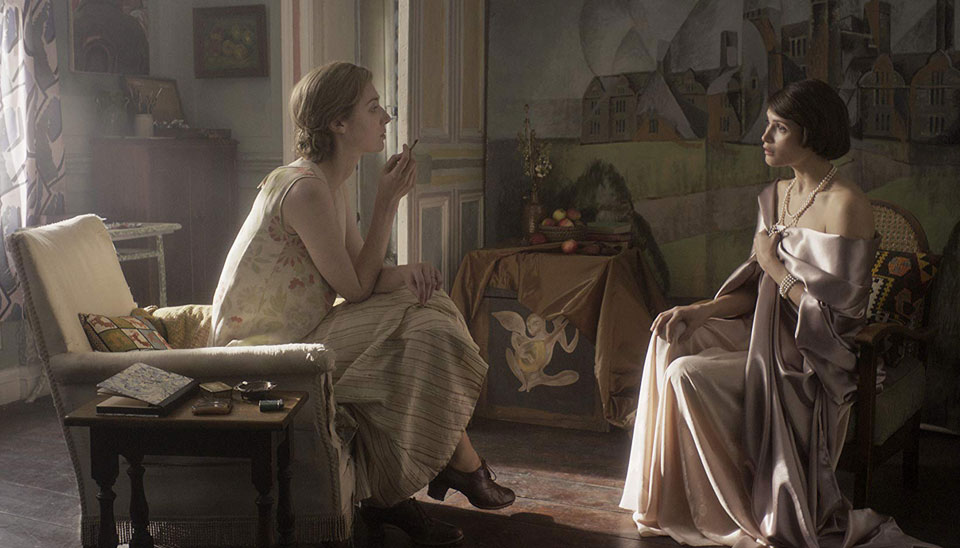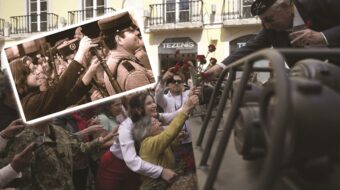
Since her untimely death—a suicide by drowning—at the age of 59 in 1941, British writer Virginia Woolf has become a feminist icon for her literary explorations into the subject of womanhood in contemporary society. Not given to writing frivolous escapades or intricate comedies of manners, Woolf delved deep, after her first novelistic trial runs, into the female psyche in a man’s world, insisting on the need for a woman to find “a room of her own”—in other words, her independence—for reflection and self-examination. Like French writer Marcel Proust and Irish writer James Joyce in Ulysses (1922), Woolf considered a few hours or a single day worth recording in utmost detail in order to capture all the flitting thoughts, impressions and emotional states that occupy a woman’s brain cells. Not only in subject matter but also in form did she help to break visionary new ground in the English language.
Among her most important works are Mrs. Dalloway (1925), To the Lighthouse (1927), Orlando: A Biography (1928), and A Room of One’s Own (1929), which became classics of feminist literature.
From 1907 on she settled in London’s Fitzroy Square, centering a group of writers, painters and intellectuals known as the Bloomsbury Group, alongside her supportive husband Leonard Woolf, a writer and book publisher, whom she married in 1912. Together they ran the prestigious Hogarth Press.
“Bloomsbury” as a unique literary construct continues to hold a special fascination for readers because of the high character of debate and conversation about life, love, art, esthetics, politics and sexuality that characterized the community. It comes down in lore and many critical studies as an admirable bubble of probing intelligence and bright wit. Readers fantasize what it must have been like to spend evenings drinking in the scintillation of sparkling dialogue and opinion on both the eternal questions and the issues of the day. Since curious minds always want to know, biographers like to highlight the constant bed- and partner-swapping that took place among this oh so highly modern and sophisticated pansexual crowd.
The new film Vita & Virginia significantly places Virginia Woolf in second place—to Vita Sackville-West (1892-1962), novelist and poet and garden designer married to the diplomat Sir Harold Nicolson (1886-1968). Vita was the dominant partner in any relationship. The film opens with her and Sir Harold scandalizing all Britain in a radio interview in which they praise the virtues of open marriage and disdain for ownership and jealousy.
Although an up-and-coming member of the literary establishment herself, Vita looked up to Virginia for her superior command of ideas expressed in word: Practically everything out of Virginia’s mouth is an epigrammatic pearl. The cinematography also shows Vita literally looking up to the lanky Virginia, who is a good six or eight inches taller. An element in seducing her, which she works at for the better half of the film, has to do with subjecting her to Vita’s openly stated, manipulating threat: “If you leave me stranded I will hurt you.”
Although the film portrays Vita as devious, arbitrary and controlling—and yet still under the psychological and financial thumb of her thoroughly conventional but wealthy mother—it also makes clear the origin of her discontent. An only child born to an aristocratic family in the ancestral home of Knole in Kent, a manor that had been granted to her forebears by Queen Elizabeth I, Vita did not inherit it owing to sexist laws of primogeniture. Instead the castle went to a male cousin. Vita poured her acidic resentment into all her human dealings. That may in part explain why she so enjoyed the company of her plants.
Though Vita and Virginia are the two central figures, their respective husbands also have important roles, as well as Virginia’s sister, the modernist painter Vanessa Bell, married to Clive Bell but at the time of this story actively cavorting with the homosexual painter Duncan Grant. With all this free love floating around, a brief scene at the Hogarth printing house is revealing: An employee (a Black man, incidentally) is bereft that his girlfriend is cheating on him, and the response to his pain on Virginia’s and the other printshop personnel is a decided ho-hum. The theme of betrayal will come up again later in a far more personal, wounding form.
Without elevating that scene into any kind of pivotal moment in the film, still it illustrates a great deal about this circle of esthetes. They are so self-absorbed and self-congratulatory that they position themselves in the aerie far above the daily troubles of mere mortals. Everything announces it in big, bold gestures: the sporty cars they drive, the fine food they eat (prepared by servants we barely see), the fashion show they parade on their bodies, the immaculate makeup, hairdos, jeweled turbans and fascinators, the royal manors they inhabit, the toney parties they attend.
Viewers may well compare the milieu of this film to the popular Upstairs, Downstairs, except that there the entire vertical class system is integral to the story, and here it is virtually absent. (The British do these period costume dramas so frightfully well.)
Now to be fair, Virginia comes from somewhat different stock, as does her Jewish husband Leonard (though that important fact—unless I missed it—doesn’t seem to merit a mention in this depiction of a rigidly layered society with deeply seated anti-Semitism). They dress and behave far more modestly than Vita and Harold.
The whole precious atmosphere of the film is one of exquisite, claustrophobic detachment, a stylish dissociation from almost everything real and on the ground. There is also some treatment of Virginia’s mental breakdown—her hallucinations and ruminations on dying—which would eventually come back in even greater force after World War II began, though that is not within the scope of the film. At least the sex scenes show some healthy physicality and heavy breathing—something liberating for once from the mental hothouse in which these characters reside. The sexual freedom Virginia experiences in a same-gender affair actually helps to stabilize her and get her productively back to her writing.
Central to the plot of the film is that the eventual breakup with Vita inspires what many critics regard as Virginia’s best book, Orlando. It paints a psychological portrait of her erstwhile lover more accurate in tone than Vita herself could have articulated; as Vita is forced to admit, it’s “the wisest, richest book I’ve ever read.” Virginia’s assessment of Vita is simple but profound: She is “incapable of shining light on one person.” Although fictional, Orlando also set a new bar for biographical writing that subsequent writers about other people’s lives have sought to reach—and it became Virginia Woolf’s best-selling book.
I got the feeling we viewers were like naughty children hiding halfway down a flight of late 1920s British stairs listening and peeking in on parental goings-on we were not meant to witness.
Whether or not you might care enough about the characters or the period to see it, Vita & Virginia is absolutely sumptuous filmmaking. Chanya Button directs with discerning psychological acumen. The casting is perfect: Gemma Arterton portrays the wildcat Vita, and Elizabeth Debicki plays the teary, vulnerable and convincing Virginia. Rupert Penry-Jones is Sir Harold Nicolson, and his counterpart Leonard Woolf is played by Peter Ferdinando. Isabella Rossellini has a couple of brief but powerful scenes as Vita’s mother, Lady Sackville. Camera work by Carlos De Carvalho is superb. It is released in the United States by IFC Films and will shortly be popping up in theaters nationwide.
The trailer can be seen here.












Comments